The Holocaust of the Masonic Communists (1)
By Fabio Giuseppe Carlo Carisio
for Veterans Today
It was November 7, 1917 (October 25, according to the Julian calendar) when the first cannon shot (blanks) was fired from the cruiser Aurora, which symbolically gave way to the Revolution. An event for decades idealized by Soviet propaganda.
Nothing heroic, as Eisenstein recounted, and nothing dramatic and bloody, as Lenin had foreseen in his plans.
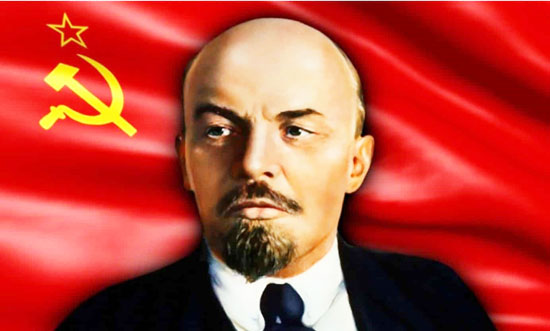
Thus began the Bolshevik Revolution, so defined because bolshinstvo in Russian means “of the majority”, and today in Italian it has taken on the generic concept of revolutionary. Thus began a Regime of World Terror which had sprouted with the same period of the French Revolution of the bloodthirsty Maximilien de Robespierre and with the bankruptcy experience of the Paris Commune which had seen Vladimir Il’ič Ul’janov precisely, to the century simply Lenin, in France to study the scholarships then transferred to the homonymous book.
If today a hundred or so Italian Communist fundamentalists – very similar to Islamic extremists for ideological fanaticism with the only difference of no longer using weapons and bombs after the harsh repression of their Red Brigade ancestors – can freely sing the Foibas threatening the Northern League’s Matteo Salvini is only because the process of international condemnation of communism not only never happened but never even started although this tyrannical socialist philosophy applied by various dictators (Stalin, Mao, Pol Pot, Tito, Fidel Castro etc.) has 95 million deaths occurred in 75 years of too long-lived existence.
The Negotiation of Communist Totalitarian Regimes
The number of the communist victims is however continuously updated for the at least 70 thousand capital punishments executed by the Republic of China between 1993 and 2016, according to data, however partial and estimated by default by humanitarian organizations (Amnesty International and Dui Hua Foundation) as the government of Beijing keeps the number of executions secret.
Among the death sentences there are many cases of ideological origins, as it is easy for Chinese judicial authorities to hand one of the 48 crimes for which capital punishment is provided to anyone. Suffice it to say that one of the protagonists of the Tienanmen Square uprising in 1989, the twenty-five-year-old worker Miao Deshun, had been sentenced to death on a fire charge, only for having thrown a basket on a tank that was already burning.
“One speaks infinitely more of Nazism and Fascism, although the history of those regimes dates back to the first half of the century, it closes almost half a century before communism and only fills two decades or so of the history of individual countries”, Marcello Veneziani wrote in one of his editorials. “When talking about communism, the use of partial references or differently named derivatives prevails; for example when we talk about totalitarianisms, the obligatory and substitute reference is to Stalinism, more rarely to Maoism. We rarely speak of communism – especially with regard to terror and totalitarianism, deportation and repression – as if we wanted to save the immaculate purity of the idea from the horrors of history”, the editorialist continued.
The 40 Thousand Dead of the Regime of the French Terror
Karl Marx argued that 1793 was the apogee of the process of emancipation of the citizen that began with the French Revolution: it was when the proletariat took control of the bourgeois revolt by supporting Robespierre who established the Public Health Committee and the Regime of Terror to which about 40 thousand dead are attributed.
The most precise study on the total number of victims of the Terror is that of Donald Greer, who calculates 16,594 sentences of death sentences issued and carried out by the Revolutionary Court and other courts of revolutionary justice, for a total of about 17 thousand dead through the guillotine – according to Wikipedia. To these the victims of numerous executions without sentence must be added, especially during the repressions of Lyon and Toulon, and the victims of war.
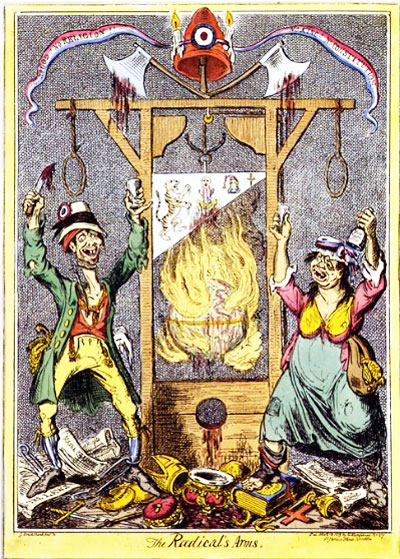
The guillotine, symbol of the Jacobin Terror regime, in an English caricature.
Why delay on the French Revolution? Because that was the first destructive motion of socialist philosophy that had its full ideological expression in the short and tremendous experience of the Paris Commune (1871).
As such the socialist government is defined as directing Paris from 18 of March to 28 of May 1871 in revolt against the French Empire of Napoleon III after the military defeats against Prussia: on 4 of September 1870 the population of Paris imposed the proclamation of the Republic, counting to obtain social reforms and the continuation of the war.
Imposed peace and threatened return of the monarchy was driven by an insurrection that on March 26, 1871 directly elected the city government, suppressing the parliamentary institute. The Commune adopted the red flag as its own symbol, eliminated the permanent army and armed the citizens, established free and secular education, elected magistrates, paid public officials and members of the Council of the Commune with salaries next to the workers, favored the workers’ associations and began the massacre of the opponents, such as the citizens loyal to the legitimate government and the religious.
The revolt was severely repressed by the national army of the Marshal of France, Patrice Mac Mahon, on May 21, but remained in the heart of Lenin who took it as a starting point for the foundation in 1912 of the Communist Party of the Corporate Union (PCUS) and the Bolshevik Revolution.
The Illuminati, the Freemasonry and the French Revolution
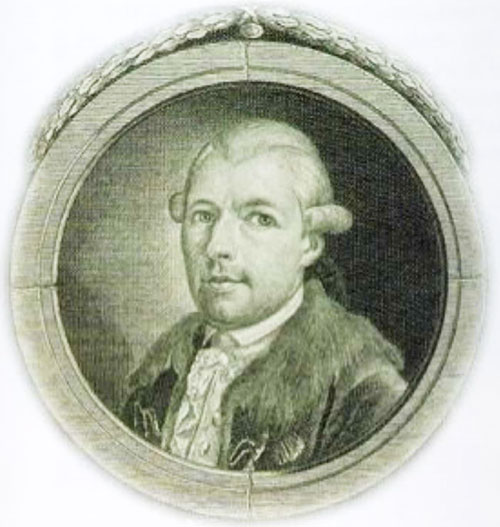
Johann Adam Weishaupt, founder of the Illuminati
Those who are interested in Freemasonry studies know about the Illuminati of Bavaria and the thesis according to which they were the ones who created the French Revolution. An Illuminati courier named Johann Jakob Lanz, a former Catholic priest, was killed by lightning in 1785 while riding through the city of Regensburg. Examining the contents of his saddle bag, the cops discover the existence of the Illuminati Order, and find detailed plans for the upcoming French Revolution. The Bavarian authorities alert the French government to the impending disaster, but they do not take this warning into account.
The Bavarian police arrest all the members of the Order of the Illuminati they manage to find, but Weishaupt and other adepts manage to hide and escape arrest.
But who are the Illuminati? In 1777, the Jewish banker Mayer Amschel Rothschild (1744-1812) brought together twelve of his most influential friends and convinced them that if they combined their resources, they could dominate the world. This meeting took place in Frankfurt, Germany.
Rothschild also informed his friends that he has found the perfect candidate, an individual with incredible intellect and great ingenuity, to guide the organization he designed: this man was Johann Adam Weishaupt (1748-1830). On May 1, 1776, Weishaupt himself founded the Secret Society called the Illuminati Order. Weishaupt was Professor of Canon Law at the University of Ingolstadt, Bavaria. The Illuminati try to establish a New World Order with the objective of abolition of all legitimate governments.
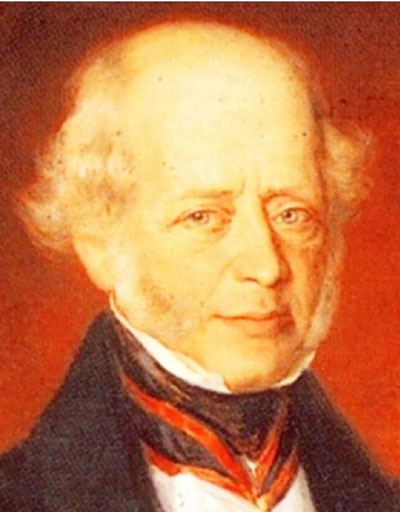
Mayer Amschel Rothschild, founder of the homonymous banker dynasty and the Bavarian Illuminati
The Illuminati took inspiration from the characteristics of a secret society, the Freemasonry, officially born on June 24, 1717 with the Grand Lodge of London (or of England), but they considered themselves “superior” to the Freemasons for ideologies and recklessness: in practice an occult and elite superstructure like the modern P2. Their activity was swept in the bud by judicial inquiries that sentenced Weishaupt to death, but he managed to escape justice (the acolytes had members even among the magistrates) thanks to the shelter that offered Gotha a high level aristocrat of Freemasonry and the Illuminati: Duke Ernesto II of Saxe-Gotha-Altenburg.
In 1774, he became a Freemason in the Zinnendorf system and a member of the Gotha Zum Rautenkranz lodge; in 1775 he became Grand Master of the Grand Lodge of Germany and in 1783 member of the Bavarian Illuminati Academy with the name Quintus Severus and / or Timoleone, in 1784 he became Supervisor of the Abessinien (name for Upper Saxony). Three years later he welcomed the fugitive Weishaupt that under the pseudonym Spartacus published several books on his organization.
The books were translated by Johann Joachim Christoph Bode, the first referent of the sect in Thuringia, who became the new coordinator of the Illuminati and made increasingly stronger contacts with the lodge Les Amis Réunis, the loggia of the Philalèthes in Paris, in whose convention he participated in 1787 sanctioning of continued the propaganda of the Illuminati ideals within the Freemasonry itself, headed by the Grand Lodge of France.
The Masons Declare War to the Monarchy and Church
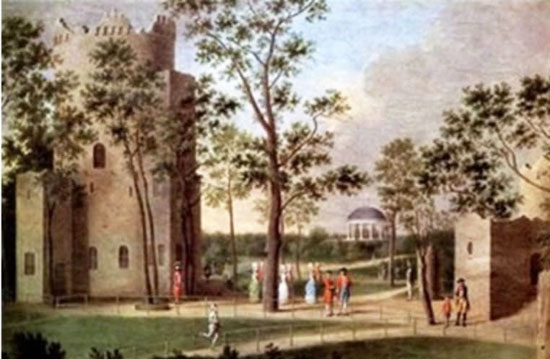
The Wilhelmsbad Castle owned by Mayer Amschel Rothschild where the Masonic Congress of 1782 took place
“In July 1782, the Order of the Illuminati allies with Freemasonry during the Congress of Wilhelmsbad, which the Masonic historian Albert Mackey calls ‘the most important Masonic Congress of the eighteenth century’,” – reads the site of Giacinto Butindaro The Masonry Unmasked, full of anecdotes and authoritative historical sources. “The participants in that Congress had to swear not to reveal the decisions taken to anyone.” (see Nesta H. Webster, World Revolution, 1921, p. 31). The Illuminati are represented by Baron von Knigge, who was a Freemason.
In that congress – which sanctioned the alliance of Freemasonry with the Illuminati – there were representatives of about three million members belonging to secret societies who adopted organizational plans formulated by the Illuminati (see Gary Allen, Illuminism, The Great Conspiracy, in American Opinion, June 1976, p. 47-49). The Congress – also attended by Jews – also passed a resolution according to which from that moment onwards the Jews would no longer be excluded from the lodges.
At the end of the Congress, the Illuminati members were completely satisfied. The French noble François-Henri de Virieu (1754-1793), a member of the Loggia Martinista di Lione, who was attending the Congress, went away visibly shaken. When he was questioned by someone about the “tragic secrets” he had heard of, he replied: “I will not confide to him. I can only tell you that this is much more serious than you think.”
“The conspiracy that is taking place is so designed that it will be practically impossible for the Monarchy and the Church to escape from it.” (M. Charles Albert Costa De Beauregard, Le roman d’un royaliste sous la Révolution: Souvenirs du comte de Virieu, 1895, p. 43). From that moment, the Count de Virieu could speak of Freemasonry only with horror (see William T. Still, New World Order: The Ancient Plan of Secret Societies, 1990, p. 82).
We know very well what happened in France seven years later: from the beheading of Louis XVI the Bourbon that was guillotined January 21, 1793 in Piazza della Rivoluzione, the current Place de la Concorde, where he presented himself dressed in white holding the book of Psalms, to persecution in the Vendée with the massacre of priests and Catholics. A feeling of hatred, that towards the clergy, which the Jacobins share with Stalin’s communists, to his Polish followers who killed the priest of Solidarnosc Jerzy Popiełuszko in 1984 and the red partisans who even managed to kill the fourteen year old Rolando Maria, on April 13, 1945, when the war was practically over, only because it was a Christian and seminarian. The words of the Count of Virieux as the Decalogue of the Illuminati clearly explain why.
Revolutionaries, Masons and Communists
These premises were necessary to understand well the ideological ferment but also the occult forces that fomented the French Revolution which, as mentioned, became through the Paris Commune, the example for the Bolshevik one. But the intertwining of Freemasonry and communism does not stop there. In 1848 Karl Marx and Friedrich Engels published the Manifesto of the Communist Party, later incorporated by Lenin to give life to the Communist Party of the Soviet Union. For the less experienced in history that manifesto is the spontaneous expression of the thought of two philosophers on the vision of the ideal society for the well-being of humanity.
In reality it was a work agreed within the League of Communists born of the 1847 meeting between Engels and Karl Schapper, president of the Germany Democratic Society of London, founded in 1840, a character who deserves further study. Karl Friedrich Schapper, born on December 30 in Weinbach, to a Protestant pastor, began his revolutionary student activities in Giessen in 1832 within the Radical Fraternity with which he participated in an insurrection known as the Frankfurter Landsturm.
Aspiring revolutionaries seized an arsenal to overthrow the Frankfurt Diet and proclaim a Republic. Schapper was imprisoned, but after three months he managed to escape, heading towards Switzerland where he joined the radical organization Young Germany. The Young Germany modeled and affiliated with Giuseppe Mazzini’s Giovani Italia. In 1834 he participated in Mazzini’s attempt at an unsuccessful armed invasion of Savoy from Switzerland and Schapper was again imprisoned. Released, he continued his political activities enough to deserve expulsion from Switzerland in 1836: he went to Paris. He joined the French section of Young Germany and the Communist League of the Banned, soon renamed the League of the Righteous, later renamed the Communist League. In 1839, the League was implicated in another unsuccessful uprising and Schapper was again imprisoned.
In 1840 he was expelled from France and went to London, England, where he reorganized the League of Communists which in a few years produced the famous Manifesto. Schapper, therefore, was the animator of the International Workingmen’s Association (IWA), often called the First International (1864–1876), later renamed the Communist League. In 1839, the League was implicated in another unsuccessful uprising and Schapper was again imprisoned.
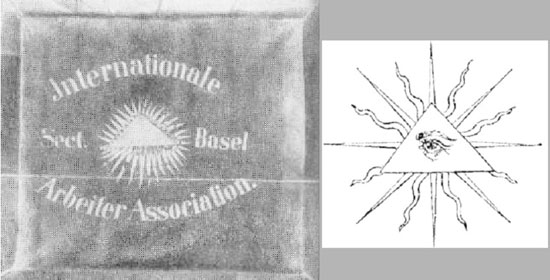
The symbol of the International Association of Working Men next to the logo of the Illuminati of Bavaria
It is remarkable to note that the symbol of the Basel section of this association is almost identical to the Illuminati heraldic logo. But that is not all. Schapper was a follower and collaborator of Mazzini who became one of the most important Freemasons in Europe, a link between the other brother of the Great Lodge of England, Lord Plamerston, British Secretary of State, Albert Pike, South American generalist founder of Ku Klux Klan, and the American Pope of the Masonic affiliation of the Ancient and Accepted Scottish Rite.
Read the second part of the article
yogaesoteric
May 9, 2019
